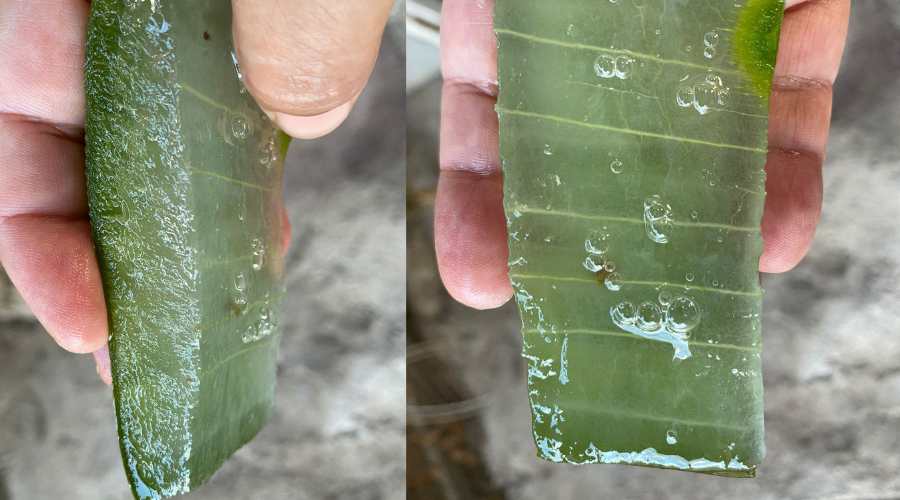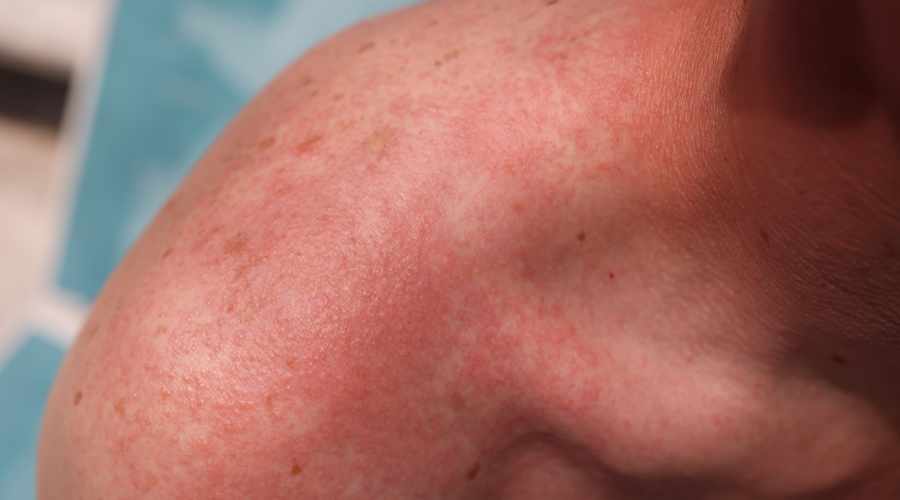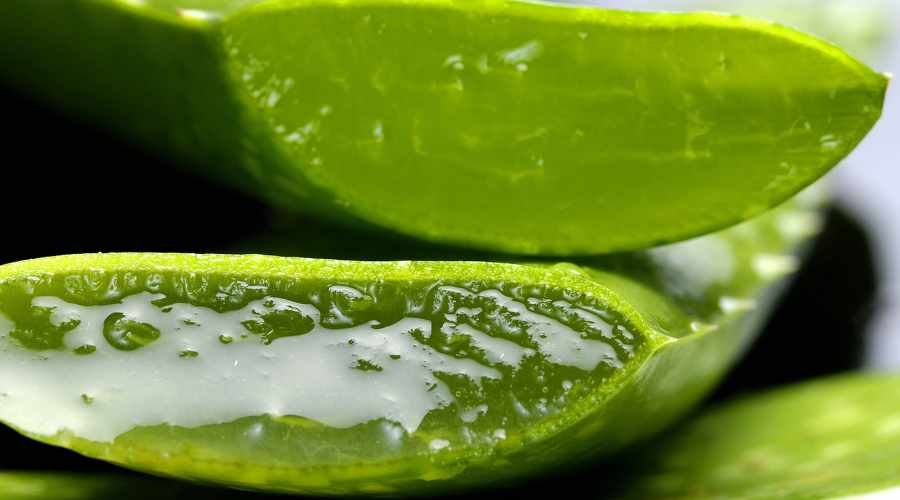Why Is Aloe Good for Sunburn?
After a day soaking up the sun, have you ever felt that familiar sting of a sunburn? You’re not alone. Many of us have been there, and it’s not pleasant.
But nature has a remedy up its sleeve: Aloe vera.
This wonder plant has become a daily staple for me, both for my skin and overall health.
I’ve got a collection of over 20 Aloe vera plants at home, and I’ve got big plans to grow that number to over 100! Not just for me, but to share the benefits by selling the leaves to others.
The more I learn about Aloe vera, the more I’m amazed, to be honest.
Recent scientific studies have shed light on its incredible properties. For example, this study reveals that Aloe vera is packed with over 200 active substances.
Historically, it’s been a go-to remedy for various conditions, including sunburn, radiation-related skin issues, and even psoriasis. The magic seems to lie in the polysaccharides in the gel of its leaves. It also features a rich composition of other beneficial components such as vitamins, enzymes, minerals, amino acids, and salicylic acids.
Every day brings new discoveries about Aloe vera, and I’m constantly in awe. I genuinely can’t imagine life without this plant.

If you’ve been caught out by sunburn, I’d recommend trying Aloe vera.
But don’t just take my word for it. In this article, we’ll look into why Aloe vera is so effective for sunburn relief, drawing on both scientific research and its natural healing properties.
If your sunburn is severe or if you experience symptoms like blisters, extreme pain, or fever, it’s essential to seek medical advice.
Why Is Aloe Good for Sunburn? Key Takeaways
- Sunburn can harm your skin by causing redness, pain, and inflammation when your skin gets too much UV light from the sun.
- Aloe vera gel has soothing properties that can help with sunburn relief by reducing inflammation and providing a cooling effect.
- Applying aloe vera directly to the sunburned area promotes faster healing, reduces redness, and relieves pain and discomfort.
- Aloe vera is available in various forms such as gels, lotions, extracts, or sprays for convenient application and effective sunburn relief.
Understanding Sunburn and Their Effects on the Skin
Sunburn are more than just a temporary discomfort. They occur due to overexposure to UV light, causing the skin to become red, inflamed, and painful and can have lasting effects on our skin. Let’s break it down:
Causes of sunburn
Sunburn happen for several reasons.
- Prolonged exposure to the sun’s ultraviolet (UV) rays without adequate protection.
- Not using sunscreen or wearing protective clothing.
- Reflective surfaces, like water or snow, intensify the sun’s harmful rays.
Symptoms of sunburn
Sunburn can cause several symptoms on the skin, including:
- Red, painful skin that feels hot to touch
- Swelling and blisters
- Peeling skin after a few days
- Itchiness or a rash

Effects of sunburn on the skin
Sunburn can have harmful effects on the skin.
- Accelerated skin ageing, leading to wrinkles and fine lines.
- Increased risk of skin cancers, including melanoma.
- Damage to skin cells and blood vessels.
Sunburn can be classified into different degrees based on their severity. First-degree sunburn results in redness and tenderness of the skin’s outer layer. Second-degree sunburn affects deeper skin layers, leading to symptoms like blistering and peeling. The healing process for sunburn can vary in duration, as our body diligently works to repair the damaged skin.
Protecting our skin from the sun’s intense rays is essential to prevent immediate sunburn and potential long-term effects.
Enter Aloe vera, offering a natural remedy against the sun’s harsh rays. Let’s explore the healing properties of Aloe vera specifically tailored for sunburn relief.
The Healing Properties of Aloe Vera for Sunburn Relief

Research has shown that aloe vera gel can speed up healing and reduce redness after sunburn. [Sources 1, 2, 3]
The science behind Aloe Vera’s soothing properties
Aloe vera has soothing properties that can help with sunburn relief. The below components, in combination, give Aloe vera its unique soothing and healing properties, especially beneficial for sunburn relief,
- Polysaccharides: These are complex carbohydrates found in the gel of Aloe vera leaves. They play a significant role in moisturising and hydrating the skin, which can be especially beneficial for sunburned skin that’s dry and irritated.
- Anthraquinones: These are organic compounds known for their antioxidant properties. They help in scavenging free radicals, which can be produced during the inflammatory response of sunburn, thus preventing cell damage.
- Enzymes: Aloe vera contains enzymes that can help reduce inflammation, promoting faster healing of sunburned skin.
- Vitamins: Aloe vera is rich in vitamins, especially vitamins C and B, which have anti-inflammatory properties and can help repair and soothe sunburned skin.
- Minerals: The gel contains essential minerals like zinc, which acts as an astringent to reduce pore size, and magnesium lactate, known to inhibit the synthesis of histamine (a compound involved in inflammatory reactions).
- Amino Acids: Aloe vera contains 20 of the 22 necessary amino acids the human body requires. In conjunction with the plant’s other components, these amino acids can help regenerate skin tissue.
- Salicylic Acid: This is a type of beta hydroxy acid (BHA) with anti-inflammatory properties. It can help to exfoliate the skin and unclog pores, which can be beneficial for sunburned skin to prevent peeling and flaking.
Here’s a helpful table:
| Component | Description |
|---|---|
| Polysaccharides | A type of beta hydroxy acid (BHA) with anti-inflammatory properties. It exfoliates the skin and unclogs pores, which is beneficial for sunburned skin to prevent peeling and flaking. |
| Anthraquinones | Organic compounds with antioxidant properties. They scavenge free radicals produced during sunburn’s inflammatory response, preventing cell damage. |
| Enzymes | Present in Aloe vera, they help reduce inflammation and promote faster healing of sunburned skin. |
| Vitamins | Aloe vera is rich in vitamins, especially C and B. They have anti-inflammatory properties and help repair and soothe sunburned skin. |
| Minerals | The gel contains minerals like zinc (reduces pore size) and magnesium lactate (inhibits histamine synthesis, a compound in inflammatory reactions). |
| Amino Acids | Aloe vera has 20 of the 22 necessary amino acids for humans. In conjunction with other components, they help regenerate skin tissue. |
| Salicylic Acid | A type of beta hydroxy acid (BHA) with anti-inflammatory properties. It exfoliates the skin and unclogs pores, beneficial for sunburned skin to prevent peeling and flaking. |
This paper provides a comprehensive review of Aloe vera and its components.
How aloe vera accelerates the healing process
Aloe vera doesn’t just soothe; it actively promotes the healing of sunburned skin.
Why is Aloe vera so effective? The Aloe vera gel contains polysaccharides (like “natural sugars”). These sugars, particularly glucomannans and acemannans, are the stars of the show when it comes to healing. They soothe the burn and help our skin repair itself faster.
One study looked Aloe vera’s healing power, thanks to its polysaccharides. Another piece of research highlighted its effectiveness in treating burn wounds when combined with honey and milk. And if you’re thinking long-term, there’s evidence supporting Aloe vera’s role in post-surgery wound recovery.
Reduction of pain and inflammation
When you apply Aloe vera directly to a sunburn, you’re not just cooling the skin. You’re also providing immediate relief from the discomfort and pain. This is because Aloe vera promotes the healing of damaged skin cells, aiding in the reduction of sunburn symptoms.

- Reduction in Pain: The pain-relieving properties of Aloe vera can be attributed to its enzymes and salicylic acid content. Salicylic acid acts as a painkiller, while certain enzymes in Aloe vera help soothe the skin, reducing the burning sensation often associated with sunburn.
- Reduction in Inflammation: The anti-inflammatory effects of Aloe vera come from a combination of its components. Polysaccharides play a role in skin repair and growth, while vitamins, especially vitamins C and B, have anti-inflammatory properties that help calm the skin. Additionally, minerals like zinc and magnesium lactate work to reduce swelling and inhibit the synthesis of histamine, a compound involved in inflammatory reactions.
Here’s some research on Aloe vera for pain and inflammation:
- A study highlighted the anti-inflammatory potential of Aloe vera in oral mucositis therapy. It found that Aloe vera solutions and gels reduced inflammation and pain.
- Another research showcased the role of Aloe vera in managing Haemorrhoids, further emphasising its ability to reduce pain and inflammation.
- A more comprehensive study demonstrated Aloe vera’s anti-inflammatory, antipyretic, and analgesic activities, confirming its effectiveness in reducing pain and inflammation.
- Aloe vera has been studied for its potential in preventing and treating infusion phlebitis in the context of intravenous therapy. The research indicates that Aloe vera can effectively remedy this condition, further showcasing its anti-inflammatory properties.
In essence, Aloe vera isn’t just a soothing agent; it’s a natural remedy that actively fights against the pain and inflammation caused by sunburn, and science backs it up.
How to Use Aloe Vera for Sunburn Relief
Choose the Right Product
- Pure Aloe Vera Gel: Ideally, use gel directly from an Aloe vera plant. If purchasing, ensure it’s 100% pure Aloe vera gel without added chemicals or alcohol.
- Aloe Vera Lotions: If you prefer lotions, choose one with a high Aloe vera content.
Application
- Clean the Area: Gently clean the sunburned area with cold water and pat dry with a soft towel.
- Apply Generously: Take a generous amount of Aloe vera gel and gently apply it to the sunburned area.
- Let it Absorb: Allow the gel to soak into the skin. Don’t wash it off.
Frequency
- Reapply as Needed: For continuous relief, reapply the gel every few hours or whenever the skin feels dry and tight.
Additional Tips
- Avoid Sun Exposure: While using Aloe vera for healing, try to keep the affected area protected from further sun exposure.
- Store in Fridge: Store your Aloe vera gel or lotion in the refrigerator for an extra cooling effect.
Reapplying as Needed
To maximize the benefits of aloe vera for sunburn relief, it is important to reapply the gel as needed. This ensures that the affected area stays moisturized and continues receiving aloe vera’s soothing properties throughout the healing process.
Reapplying aloe vera gel regularly helps to keep the skin hydrated, reduce inflammation, and alleviate pain, as we explored before. Remember to gently apply a thin layer of gel each time and avoid rubbing or further irritating the sunburned skin.
By consistently reapplying aloe vera gel, you can help speed up the healing process and promote overall skin recovery after sunburn.
Using aloe vera for sunburn is a natural treatment option that is suitable for a range of skin types. It helps by reducing inflammation and easing sunburn symptoms.
Sara Perkins, MD
Forms of Aloe Vera for Sunburn Relief
Aloe vera is available in different forms that provide additional options for treating sunburned skin. Here are some other forms of aloe vera that can be used for sunburn relief:
Aloe Vera Gel
This is the most direct form of aloe vera and is derived straight from the plant’s leaves. It’s a thick, clear liquid that’s packed with the plant’s natural healing properties. Provides immediate relief from sunburn pain, reduces redness, and promotes skin healing. It’s also free from added chemicals if sourced directly from the plant.
Aloe Vera Lotions
These are commercial products that combine aloe vera gel with other ingredients to create a more spreadable lotion. They are easier to apply over large areas of the body and provide moisturisation along with the healing benefits of aloe vera.
Aloe Vera Sprays
These are liquid products that can be sprayed directly onto the skin. They are convenient for quick application, especially for hard-to-reach areas, and provide a cooling effect upon application.
Aloe Vera Creams
Thicker than lotions, these creams are often combined with other soothing ingredients. They provide deep moisturisation and are ideal for extremely dry or peeling skin resulting from sunburn.
Aloe Vera Ointments
These are typically used for more severe burns or skin conditions. They create a protective barrier on the skin, locking in moisture and promoting healing.
Additional Benefits and Precautions of Using Aloe Vera for Sunburn Relief

Additional Benefits
Rich in Nutrients: Aloe vera isn’t just for sunburn. It’s packed with vitamins, minerals, enzymes, and amino acids that benefit the skin in various ways.
Anti-ageing Properties: Regular use of aloe vera can help reduce the appearance of fine lines and wrinkles, thanks to its collagen-boosting properties.
Moisturisation: Aloe vera hydrates the skin without leaving it greasy, making it suitable for all skin types, including oily skin.
Fights Acne: The antibacterial and anti-inflammatory properties of aloe vera can help reduce acne and prevent breakouts.
Reduces Dark Spots: Aloe vera can help fade dark spots and blemishes, leading to a more even skin tone.
Precautions and potential side effects
Allergic Reactions: Before applying aloe vera to a large area, do a patch test on a small section of your skin to check for allergic reactions.
Mild to Moderate Sunburn: Aloe vera is particularly suited for mild to moderate sunburn, not deep or severe burns.
Store Properly: If you’re using natural aloe vera gel directly from the plant, store any leftovers in the fridge to keep it fresh.
Check Ingredients: When purchasing aloe vera products, always check the ingredients. Some products may contain added chemicals or fragrances that could irritate sensitive skin.
Consultation: If your sunburn is severe or if you experience symptoms like blisters, extreme pain, or fever, it’s essential to seek medical advice. If redness, swelling, or pain worsens after using aloe vera gel, discontinue use and consult a healthcare professional. Aloe vera gel may interact with certain medications or medical conditions, so always seek medical advice if you have concerns or pre-existing health conditions.
Conclusion
Aloe vera is nature’s gift to those who’ve felt the sting of a sunburn.
Its unique combination of vitamins, minerals, enzymes, and amino acids work in harmony to relieve sunburn discomfort.
From its soothing properties to its ability to accelerate the healing process, Aloe vera has repeatedly proven its worth.
Whether you’re using the gel directly from the plant or opting for commercial products, the benefits of Aloe vera for sunburn relief are undeniable.
As with any natural remedy, using it correctly and being aware of any potential precautions is essential.
So, the next time the sun catches you off guard, remember that Aloe vera is here to help.
Embrace the healing power of this wonder plant and give your skin the care it deserves.
FAQs
Q: Why is aloe good for sunburn?
A: Aloe vera is known for its healing properties and is a popular ingredient in many skincare products. When applied topically, aloe vera gel can help relieve the pain and inflammation associated with sunburn. It also helps to hydrate and moisturize the skin, promoting faster healing.
Q: How does aloe vera help with sunburn?
A: Aloe vera gel contains compounds that have anti-inflammatory and antioxidant properties. When applied to sunburned skin, it can help reduce redness, swelling, and discomfort. It also forms a protective barrier over the burned area, preventing further damage.
Q: Can I apply aloe vera straight from the plant?
A: You can use the gel directly from the aloe vera plant. Simply cut open a leaf and extract the gel using a spoon or your fingers. However, it is important to note that some people may have a reaction to aloe vera, so it’s best to do a patch test on a small area of your skin before applying it to a larger area.
Q: Where can I find aloe vera gel for sunburn relief?
A: Aloe vera gel is widely available in most drugstores, supermarkets, and beauty supply stores. Look for pure gel products that do not contain additives or artificial colours. You can also find aloe vera gel online. Check our guide to finding the best aloe vera gel in stores.
Q: Is it safe to use aloe vera for sunburn?
A: Generally, aloe vera is considered safe for topical use. However, if you experience any signs of severe sunburn, such as blistering, fever, or extreme pain, it’s important to consult a dermatologist or healthcare professional for evaluation. Additionally, if you have ever had a bad reaction to aloe vera in the past, it’s best to avoid using it.
Q: How do I apply aloe vera gel to a sunburn?
A: To apply aloe vera gel to a sunburn, gently cleanse the burnt area with cool water and pat it dry. Then, apply a layer of the gel to the affected area and allow it to absorb into the skin. Repeat this process several times a day as needed.
Q: Can aloe vera help treat a severe sunburn?
A: While aloe vera can help provide relief for mild to moderate sunburn, it may not be effective for severe sunburn or sun poisoning. If you have a severe sunburn, it’s important to seek medical attention as soon as possible.
Q: Can aloe vera be used as a sunscreen?
A: Aloe vera gel on its own does not provide sufficient protection from the sun’s harmful rays. It is not a substitute for sunscreen or sunblock. If you plan to be exposed to UV light, it’s important to use sunscreen with a high SPF and reapply it every two hours.
Q: Are there any benefits to using aloe vera for sunburn?
A: There are several benefits to using aloe vera for sunburn. It helps to soothe and moisturise the skin, reduce inflammation, and promote healing. It can also provide a cooling sensation, relieving the discomfort associated with sunburn.
References
- Zagórska-Dziok M, Furman-Toczek D, Dudra-Jastrzębska M, Zygo K, Stanisławek A, Kapka-Skrzypczak L. Evaluation of clinical effectiveness of Aloe vera – a review. J Pre Clin Clin Res [Internet]. 2017 [cited 2023 Sep 15]; 11(1):86–93. Available from: https://www.jpccr.eu/Evaluation-of-clinical-effectiveness-of-Aloe-vera-a-review,74577,0,2.html.
- CDC. UV Radiation Safety. Centers for Disease Control and Prevention [Internet]. 2023 [cited 2023 Sep 15]. Available from: https://www.cdc.gov/nceh/features/uv-radiation-safety/index.html.
- Sánchez-Pérez JF, Vicente-Agullo D, Barberá M, Castro-Rodríguez E, Cánovas M. Relationship between ultraviolet index (UVI) and first-, second- and third-degree sunburn using the Probit methodology. Sci Rep [Internet]. 2019 [cited 2023 Sep 15]; 9(1):733. Available from: https://www.nature.com/articles/s41598-018-36850-x.
- Hekmatpou D, Mehrabi F, Rahzani K, Aminiyan A. The Effect of Aloe Vera Clinical Trials on Prevention and Healing of Skin Wound: A Systematic Review. Iran J Med Sci [Internet]. 2019 [cited 2023 Sep 15]; 44(1):1–9. Available from: https://www.ncbi.nlm.nih.gov/pmc/articles/PMC6330525/.
- Heck E, Head M, Nowak D, Helm P, Baxter C. Aloe vera (gel) cream as a topical treatment for outpatient burns. Burns [Internet]. 1981 [cited 2023 Sep 15]; 7(4):291–4. Available from: http://www.scopus.com/inward/record.url?scp=0019461963&partnerID=8YFLogxK.
- Bunyapraphatsara N, Jirakulchaiwong S, Thirawarapan S, Manonukul J. The efficacy of Aloe vera cream in the treatment of first, second and third degree burns in mice. Phytomedicine. 1996; 2(3):247–51.
- Somboonwong J, Thanamittramanee S, Jariyapongskul A, Patumraj S. Therapeutic effects of Aloe vera on cutaneous microcirculation and wound healing in second degree burn model in rats. J Med Assoc Thai. 2000; 83(4):417–25.
- Saleem M. ALOE BARBADENSIS MILLER: A COMPREHENSIVE REVIEW. Pakistan Journal of Science [Internet]. 2021 [cited 2023 Sep 15]; 73(4). Available from: https://pjosr.com/index.php/pjs/article/view/388.
- Jales STL, Barbosa R de M, Albuquerque AC de, Duarte LHV, Silva GR da, Meirelles LMA, et al. Development and Characterization of Aloe vera Mucilaginous-Based Hydrogels for Psoriasis Treatment. Journal of Composites Science [Internet]. 2022 [cited 2023 Sep 15]; 6(8):231. Available from: https://www.mdpi.com/2504-477X/6/8/231.
- Farzadinia P, Jofreh N, Khatamsaz S, Movahed A, Akbarzadeh S, Mohammadi M, et al. Anti-inflammatory and Wound Healing Activities of Aloe vera , Honey and Milk Ointment on Second-Degree Burns in Rats. The International Journal of Lower Extremity Wounds [Internet]. 2016 [cited 2023 Sep 15]; 15(3):241–7. Available from: http://journals.sagepub.com/doi/10.1177/1534734616645031.
- Toha M, Sujarwadi M, Zuhroidah I. EFFECT OF ALOE VERA EXTRACT AND DISCHARGE PLANNING TO ACCELERATE WOUND HEALING OF OLDER ADULT HERNIA SURGERY PATIENTS. Nurse and Health: Jurnal Keperawatan [Internet]. 2019 [cited 2023 Sep 15]; 8(2):124–33. Available from: https://ejournal-kertacendekia.id/index.php/nhjk/article/view/121.
- Chandra VC, Nur’aeny N, Wahyuni IS. ANTI-INFLAMMATORY POTENTIAL OF ALOE VERA IN ORAL MUCOSITIS THERAPY: SYSTEMATIC REVIEW. International Journal of Applied Pharmaceutics [Internet]. 2022 [cited 2023 Sep 15]; 22–7. Available from: https://journals.innovareacademics.in/index.php/ijap/article/view/45539.
- Patil DT, Kumar PH. Role of Aloe Vera Ksharasutra in the Management of Arsha: A Case Study. Himalayan Journal of Health Sciences [Internet]. 2018 [cited 2023 Sep 15]; 64–9. Available from: http://hjhs.co.in/index.php/hjhs/article/view/26.
- Alyas S, Habib R, Shafique T, Zahid B, Hayat S, Ilyas A, et al. ANTI-INFLAMMATORY, ANTIPYRETIC AND ANALGESIC ACTIVITIES OF CHLOROFORM EXTRACT OF ALOE BARBADENSIS MILLER IN ALBINO RATS. Biological and Clinical Sciences Research Journal [Internet]. 2023 [cited 2023 Sep 15]; 2023(1):208–208. Available from: http://bcsrj.com/ojs/index.php/bcsrj/article/view/208.
- Zheng GH, Yang L, Chen HY, Chu JF, Mei L. Aloe vera for prevention and treatment of infusion phlebitis. Cochrane Database of Systematic Reviews [Internet]. 2014 [cited 2023 Sep 15]; (6). Available from: https://www.cochranelibrary.com/cdsr/doi/10.1002/14651858.CD009162.pub2/full.
